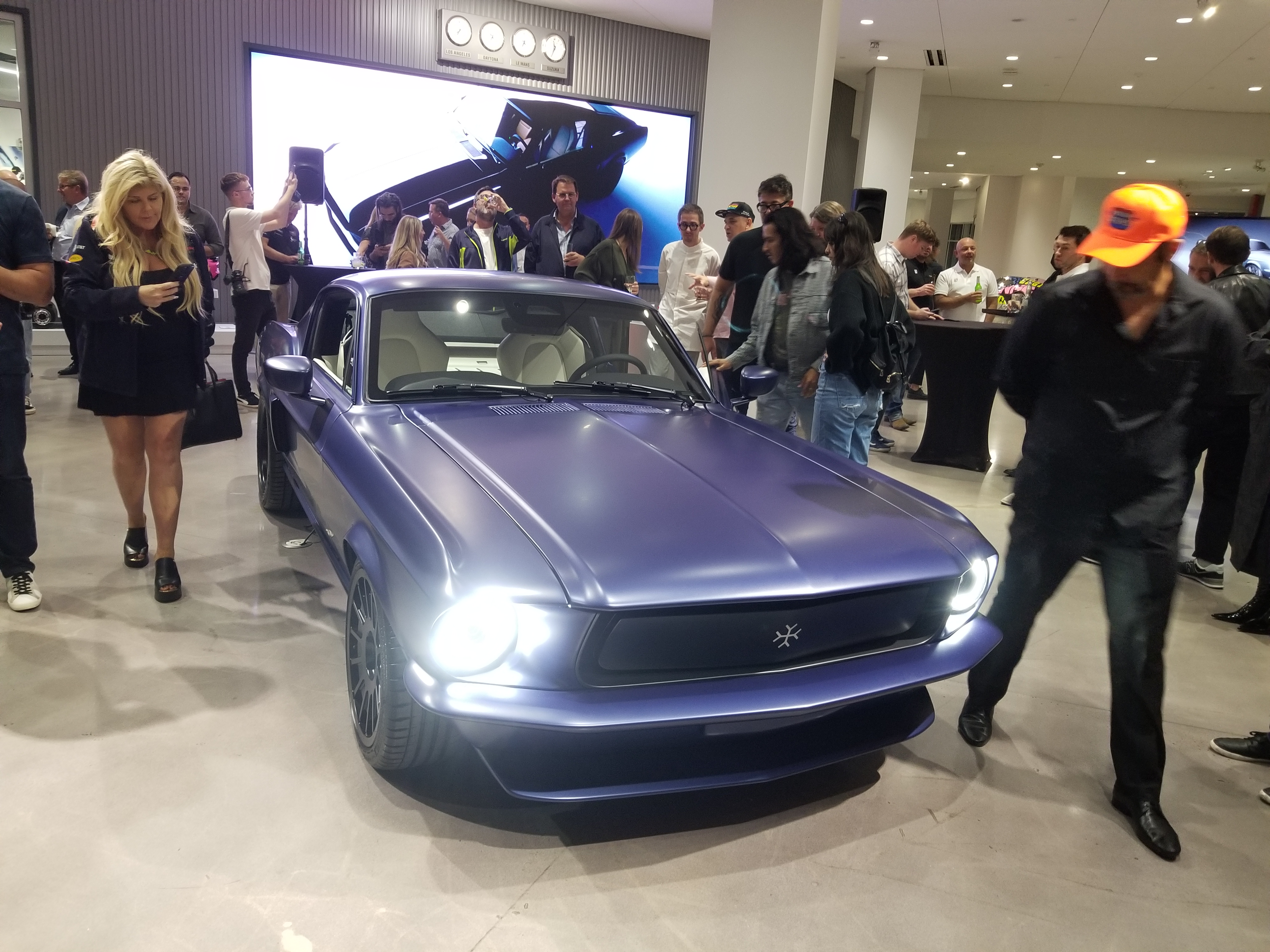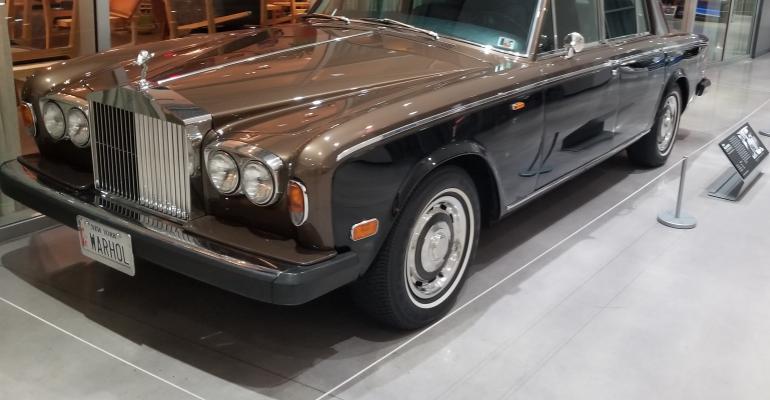LOS ANGELES – Automotive executives, suppliers, designers and journalists sip drinks as they admire a blue car that looks a lot like a ’67 Mustang with some twists, among them its electric powertrain and carbon-fiber body. Not far away sits artist Andy Warhol’s ’74 Rolls Royce. The venue is a mecca for car lovers, the Petersen Automotive Museum here.
The word “museum” may elicit images of ancient artifacts and bygone cultures, and the Petersen certainly has some of the earliest versions of some automobiles. But the museum also showcases how automotive technology is driving into the future.
“The whole idea is, the present becomes the past very quickly, and if someone is not paying attention, a lot of what should be saved won’t be,” Leslie Kendall, the Petersen’s chief historian, tells Wards. “We take the responsibility to rescue, preserve and document change as it is happening in real time.”
The ’67 (pictured, below), a battery-electric sedan that takes its name from the 1967 Ford Mustang after which it is styled, is the brainchild of London-based Charge Cars. With carbon-fiber exterior body panels, 536 hp and 1,120 lb.-ft. (1,518 Nm) of torque, the '67 can go from 0-60 mph (97 km/h) in 3.9 seconds. It has a 63-kWh battery and a 200-mile (322-km) range, according to Charge Cars. Production is limited to 499 cars, all hand-built.

“The Mustang epitomizes the American dream,” says Mark Roberts, Charge Cars’ chief creative officer. “We have redefined it into a 21st-century icon. No internal-combustion engine was harmed in the making of this car.”
Charge Cars chose the Petersen for the U.S. launch of the ’67 because “Los Angeles is the capital of automotive culture (and) the Petersen is the home of the automobile,” contends Roberts.
The Petersen Automotive Museum was founded in 1994 by publisher Robert E. Petersen, who launched Hot Rod and other auto-enthusiast magazines, and his wife Margie. Its mission is “to explore and present the history of the automobile and its impact on global life and culture using Los Angeles as the prime example,” says its website.
Kendall has been with the Petersen since it opened. The most significant change during his tenure has been the growing presence of electric vehicles, he says. Some of the EVs in the museum's collection – many of them housed in a secure area called The Vault that can be toured only by appointment – are much older than the Petersen, however.
That includes a Henney Kilowatt. First produced in 1959 by Henney Coachworks and based on a Renault Dauphin, the gasoline powertrain was removed and replaced with an electric powertrain initially powered by a 36V system provided by 18 2V batteries. That was later upgraded to a 72V system using 12 6V batteries.
The Petersen has long had alternative powertrain exhibits, says Kendall, including steam, electric, turbine energy, biofuels and gasifiers; the latter can be fueled by wood or coal. It even has a 1917 Woods Dual-Power Hybrid. But electric powertrains have been around much longer. Scottish inventor Robert Anderson is said to have produced the first EV in 1832.
“We found out people don’t understand electric power has been around since 1800,” says Kendall.
EV start-up Fisker chose the Petersen to showcase the battery-electric Ocean SUV at an event during the Los Angeles auto show in November. Tu Le, managing director of Sino-Auto Insights, a consulting firm, attended.
“As someone who is in the automotive space, (the Petersen) is a really terrific bridge between what was, what is, and what will be,” he says..
What was is represented by specimens such as the original Batmobile from the television show Batman, which aired from 1966-1968, and a car from the 2015 movie Mad Max: Fury Road.
That makes the Petersen more than just a car guys’ museum, says Le. “It really creates the connection (for all types of people) that many museums aren’t able to do,” he says.
The Petersen always has at least one alternative powertrain exhibit, says Kendall. It also has electric hypercars and electric motorcycles. People can see all that during Vault tours.
So, will electric cars replace internal-combustion-engine cars and if so, when?
“I know better than to predict,” Kendall says.





